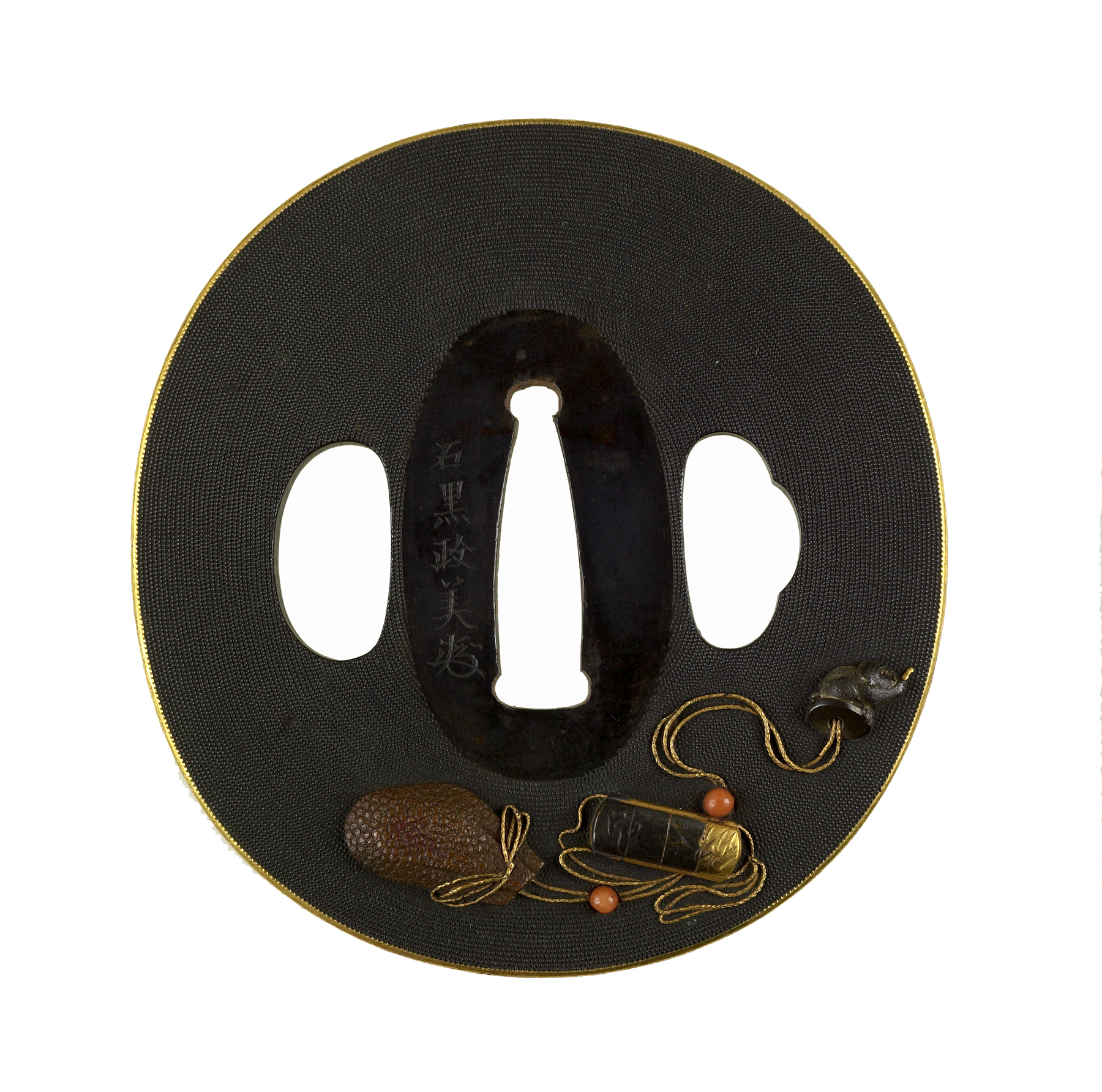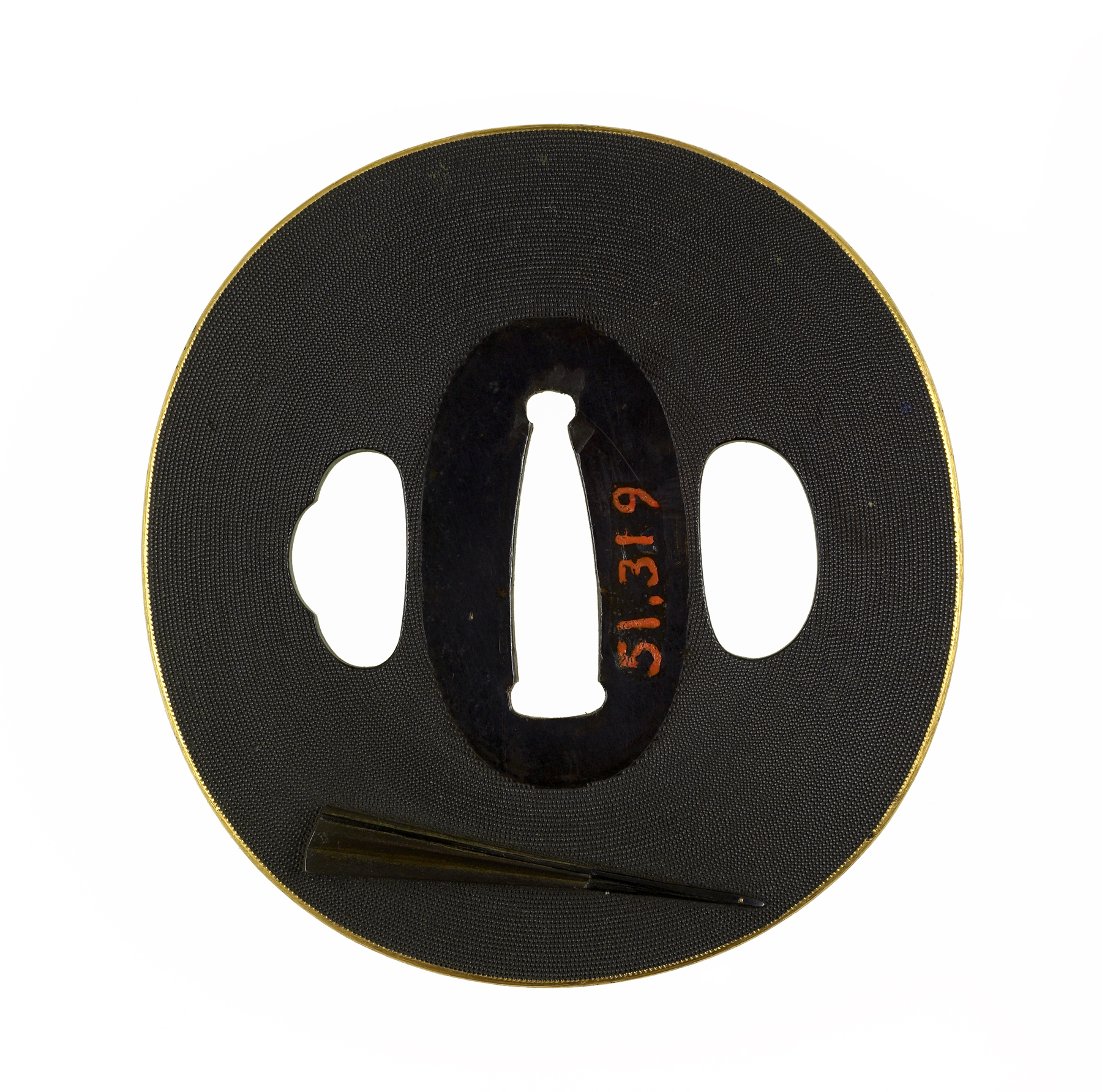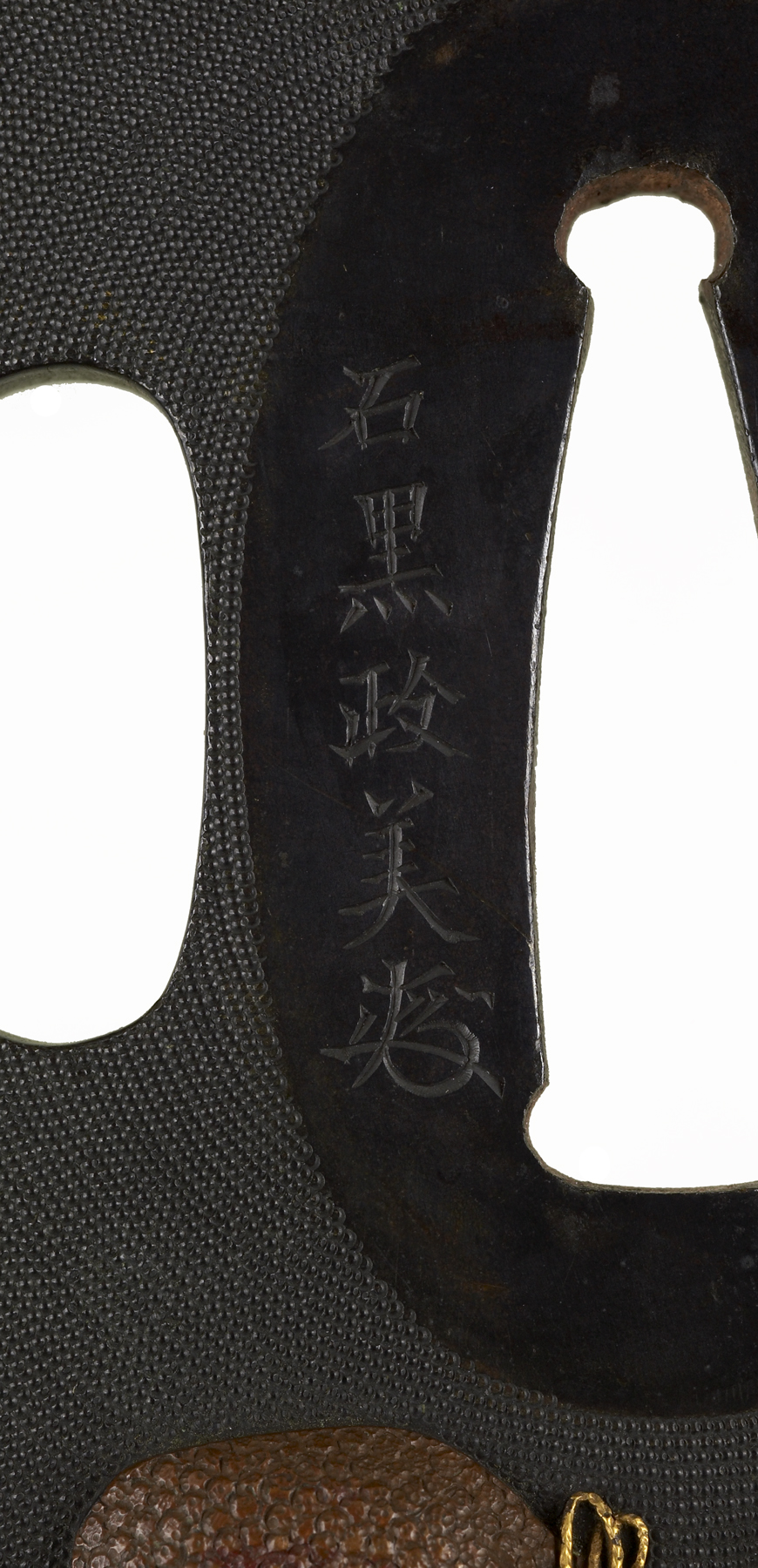Tsuba with a Netsuke, Inro, Money Pouch, and Fan
(Japanese Military Armor)
The background on this tsuba is executed is the fish egg ("nanoko-ji") style. At the bottom are displayed a netsuke, inro, and money pouch. These objects were attached to the belt of traditional Japanese kimono in order to carry small objects, including money. The netsuke is in the shape of a monkey. The netsuke is at the top of a cord connecting the other objects and serves as a counterweight to secure them to the belt ("obi"). The inro, often called a medicine case, comes first on the cord and the money pouch is last. On the reverse is a folding fan ("sensu"). This was also a commonly carried object.
Inscription
Provenance
Provenance (from the French provenir, 'to come from/forth') is the chronology of the ownership, custody, or location of a historical object. Learn more about provenance at the Walters.
Henry Walters, Baltimore [date and mode of acquisition unknown]; Walters Art Museum, 1931, by bequest.
Geographies
Japan, Tokyo (Edo) (Place of Origin)
Measurements
2 11/16 x 2 5/8 x 3/16 in. (6.85 x 6.68 x 0.4 cm)
Credit Line
Acquired by Henry Walters
Location in Museum
Not on view
Accession Number
In libraries, galleries, museums, and archives, an accession number is a unique identifier assigned to each object in the collection.
In libraries, galleries, museums, and archives, an accession number is a unique identifier assigned to each object in the collection.
51.319







